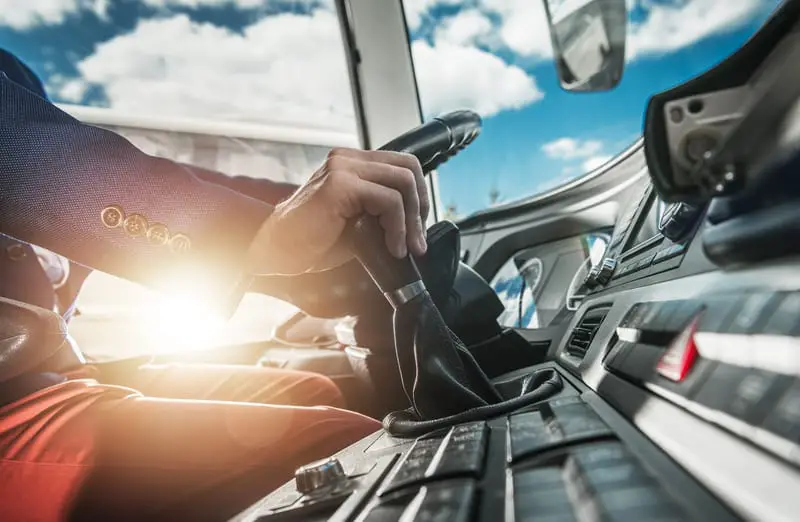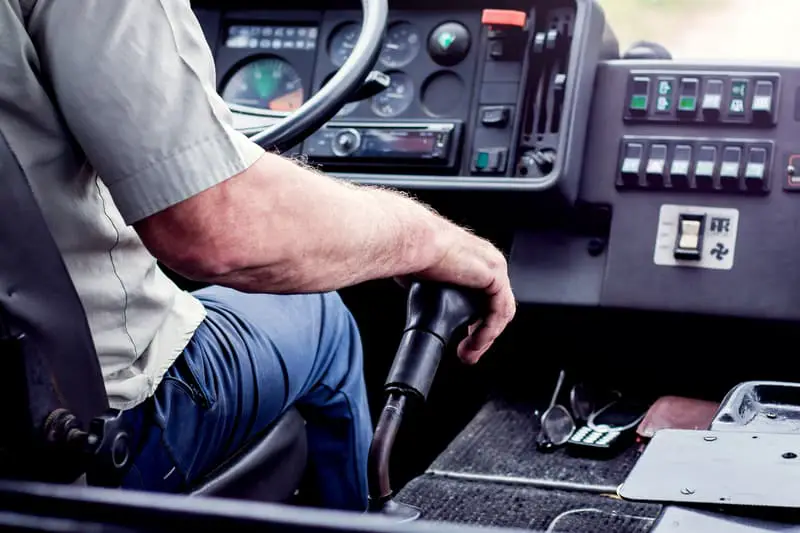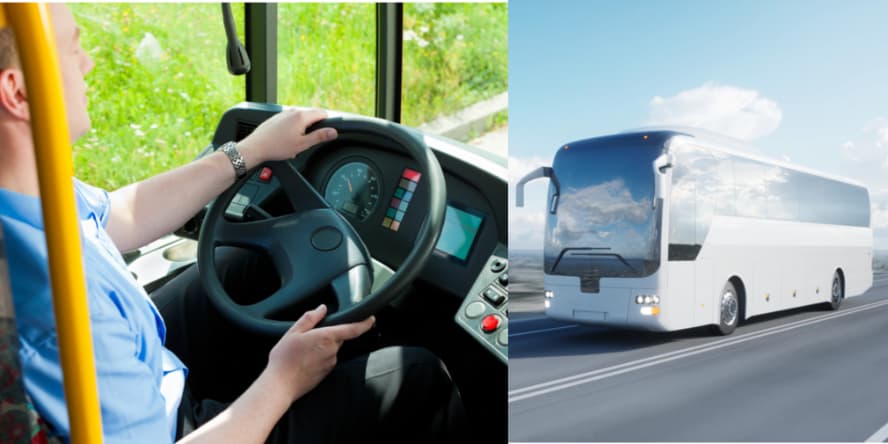
In many parts of the world, buses are the primary method of transport for most of the population. As oil prices increase, buses will become even more important to commuters.
Buses use various transmission types, including manual, automatic, and “manual/automatic” gearboxes. School buses commonly use manual transmissions, while inner city buses and coaches generally use automatic or Auto-Shift Centrifugal Clutch Gearboxes.
It may seem that modern buses are complex and difficult vehicles to maneuver. With modern technology, they are no more difficult than a large car. It also applies to fully automatic and manual gearboxes that change gears automatically.
What Transmissions Do Buses Use?
Manufacturers build coaches and buses with all types of transmissions, including:
- Manual gearboxes
- Automatic gearboxes
- Auto-Shift Centrifugal Clutch Gearboxes (ZF Transmission)
- “Twin-Disc” Power-shift
1. Manual Gearboxes
Many Japanese mid-range Buses used for school runs have a six-speed Manual gearbox.
Using the engine power to brake the bus makes the stick shift superior on hilly roads.
2. Automatic Gearboxes
Automatic gearboxes have several benefits over manual units. They also increase gas consumption and are more expensive to maintain.
Automatic transmissions provide poor engine braking for any long and steep downhill running.
3. Auto-Shift Centrifugal Clutch Gearboxes (ZF Transmission)
“Auto-Shift” is a manual Gearbox that uses a computer-controlled shifting mechanism.
These use a computer that provides instructions to a series of servos on the top of the gearbox. The servos actuate the linkages and change gears without input from the driver. Despite this, the gearbox mechanism is still the same as a manual.
This transmission offers the operators the best of both worlds. There are also no economy-sapping components like the automatic transmission’s torque converter.
These devices weigh less than an automatic transmission, resulting in better gas economy.
This system’s disadvantage is that the manual transmission’s normal “jerkiness” is still present.
4. “Twin-Disc” Power-shift
“Twin-Disc” Power-shift uses a direct coupled action with clutch packs incorporated in the gearbox.
The advantage is that removing the torque converter improves fuel economy.
The History Of Bus Transmissions

Before 1940, buses and coaches had manual “stick shift” transmissions. At that time, there were no production-ready transmissions. This meant there was no need to use words like “manual” or “standard” transmissions.
These words only became needed when automatic gearboxes came on the scene. Then it was necessary to differentiate the two.
The first bus to have an automatic transmission was the 1948 GM Old Look Transit Bus. This had a two-stage Alison V Drive Gearbox.
With the ongoing transmission improvements, cars with automatic gearboxes have become much more popular. Only 13% of new vehicles have manual transmissions.
Acceptance of automatic gearboxes in commercial vehicles was slower for the following reasons:
- Manual transmissions were more robust and required less maintenance.
- Until the 1980s, new drivers still learned to drive using manual cars. This meant enough aspiring bus drivers could already use a stick shift.
More cars had automatic gearboxes in the 1990s. This meant that new drivers learned how to drive an automatic vehicle. This reduced the number of bus drivers who could drive a manual transmission.
This increased the training needed, which cost the operators more. Without years of practice in the family car, the drivers were “rougher” on the manual gearboxes.
In the 1990s, bus manufacturers started producing more automatic vehicles.
The new gearboxes were more robust and provided a more comfortable ride for the passengers.
This technology provided a more comfortable ride for the passengers.
What Are The Advantages Of Automatic Gearboxes In Buses?

The reasons automatic gearboxes have become so dominant in buses are as follows:
- Manual gearboxes wear faster
- Automatic gearboxes increase passenger comfort
Manual Gearboxes Wear Faster
Every driver has their own driving style. In the case of public transport, multiple rivers are assigned to each bus.
It means that several different drivers will drive the bus over its lifespan. This causes varied wear patterns on the bus’s systems. It requires more maintenance on items like the clutch and gearbox.
The variable driving styles also affect gas consumption.
City and residential routes involve start-stop traffic and excessive wear on the transmission.
This driving requires more skill in a bus equipped with a manual transmission.
Automatic Gearboxes Increase Passenger Comfort
In start-stop traffic, a bus with a manual transmission provides a more “jerky” ride than an automatic transmission.
Buses with automatic gearboxes do not need drivers to change gears.
The process of gear changing is as follows:
- Remove the foot from the accelerator
- Depress the clutch
- Change gears
- Release the clutch while applying pressure to the gas pedal
In difficult driving conditions, this can cause jerks, making passengers less comfortable.
Automatic gearboxes achieve this change with minimal discomfort to the passengers.
Automatic Gearboxes Are Serviced Less Often
The cost of servicing an automatic bus gearbox is higher. The manufacturers have increased the time between services. This has made this system cost less over the long term.
The Driver’s Workload Is Less Stressful
The automatic gearbox makes the driver’s job less stressful. The company can pay the drivers less and, of course, it is easier to drive the bus.
There Can Be No Discrimination Against Drivers
Most Western countries have very strict rules regarding disabled people having equal access.
To enable people with disabilities easy access to the bus requires low step-free access.
That rule results in the engine being at the rear of the bus, which, in turn, places the gearbox at the rear of the bus. Automatic and semi-automatic units make this easier.
These do not need a direct linkage between the driver (at the front) and the transmission (at the back).
Conclusion
Modern buses use various transmission systems, each with strengths and weaknesses. Most medium-sized school buses use six-speed manual transmissions.
Inner-city buses and coaches use automatic, auto-shift centrifugal clutch gearboxes or “Twin-Disc” Power-shifts.
